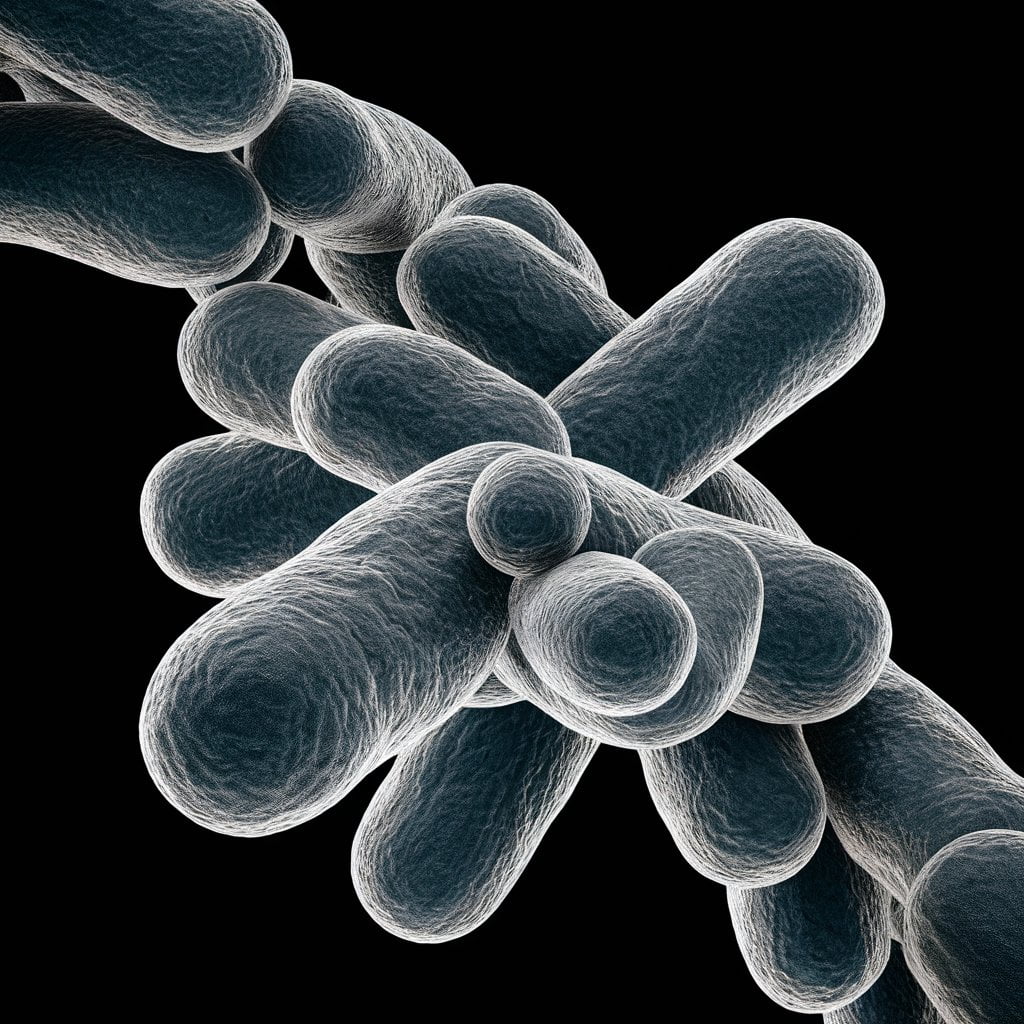Tularemia is a zoonotic illness caused by the pathogenic bacteria Francisella tularensis subsp. tularensis. Its identification and separation from other bacteria depend on biochemical testing. The following are some of the main biochemical traits of F. tularensis subsp. tularensis.
Francisella tularensis subsp. tularensis is a highly infectious bacterium and the causative agent of tularemia, also known as “rabbit fever” or “deer fly fever.” This subspecies is considered the most virulent form of F. tularensis and is primarily found in North America. Here is a detailed introduction to Francisella tularensis subsp. tularensis

1. Gram Staining in Francisella tularensis subsp. tularensis
Because Francisella tularensis subsp. tularensis does not maintain the crystal violet stain, it is a Gram-negative bacteria, which is why it looks pink or red when stained with Gram violet. Rather, it absorbs the counterstain, which is often safranin. This bacterium is a tiny, pleomorphic coccobacillus based on its morphology. Its normal dimensions are 0.2 to 0.5 micrometers for width and 0.7 to 1.0 micrometers for length. The outer membrane and thin peptidoglycan layer of the Gram-negative cell wall are essential for distinguishing it from the Gram-positive bacteria.
2. Oxidase Test in Francisella tularensis subsp. tularensis
The oxidase test results for Francisella tularensis subsp. tularensis are negative. This indicates that it is not able to manufacture cytochrome c oxidase, an enzyme that is necessary for the electron transport chain. This bacteria does not cause the oxidase reagent—which is normally a colorless dye that becomes dark purple or blue when oxidase is present—to change color during the oxidase test. The negative outcome aids in separating oxidase-positive bacteria from F. tularensis subsp. tularensis.
3. Catalase Test in Francisella tularensis subsp. tularensis
The catalase test usually results in a slightly positive response when Francisella tularensis subsp. tularensis is present. This indicates that it generates a tiny quantity of the catalase enzyme, which converts hydrogen peroxide to oxygen and water. Few bubbles are formed when hydrogen peroxide is introduced to a culture of F. tularensis subsp. tularensis, suggesting low catalase activity. It may be distinguished from other bacteria that may have significant catalase activity or none at all with the use of this faint positive result.
4. Urease Test in Francisella tularensis subsp. tularensis
In the urease test, Francisella tularensis subsp. tularensis yields a negative result. This suggests that the urease enzyme, which hydrolyzes urea into ammonia and carbon dioxide, is not produced by the bacteria. The medium does not change color when the urease test is run, indicating that there is no urease activity. This negative outcome aids in separating urease-positive organisms from F. tularensis subsp. tularensis.
5. Glucose Fermentation in Francisella tularensis subsp. tularensis
Without releasing gas, Francisella tularensis subsp. tularensis ferments glucose. This indicates that the bacteria metabolizes glucose anaerobically, producing acid that is detectable by a change in the growth medium’s pH indicator, which usually turns the medium yellow. Nonetheless, the absence of concomitant gas generation aids in differentiating it from other bacteria that digest glucose and release gas as a consequence.
6. Mannitol Fermentation in Francisella tularensis subsp. tularensis
Mannitol can be fermented by Francisella tularensis subsp. tularensis without releasing gas. This suggests that the bacteria can use mannitol as a carbon source, which will cause the pH to decrease and acid to be produced. This may be seen by a shift in the medium’s pH indicator’s hue, which usually turns it yellow. One feature that helps distinguish F. tularensis subsp. tularensis from other bacteria that could create gas during mannitol fermentation is the lack of gas generation.
7.Lactose Fermentation in Francisella tularensis subsp. tularensis
Lactose is not fermented by Francisella tularensis subsp. tularensis. When lactose and a pH indicator are added to a medium for testing, no acid is produced and the medium’s color does not change. This negative result aids in distinguishing lactose-fermenting bacteria, which cause a discernible color shift in the medium and create acid and gas. From F. tularensis subsp. tularensis.
8. Nitrate Reduction in Francisella tularensis subsp. tularensis
Francisella tularensis subsp. tularensis is positive for nitrate reduction, meaning it can convert nitrates to nitrites. This biochemical characteristic is useful in differentiating it from other bacteria and is detected by adding specific reagents that produce a red color upon reaction with nitrites.
9. Sucrose Fermentation in Francisella tularensis subsp. tularensis
Sucrose is not fermented by Francisella tularensis subsp. tularensis. This indicates that it is unable to use sucrose sugar as a carbon source for energy synthesis. It is crucial to distinguish this trait from those of other bacterial species that could also be able to ferment sucrose.
10. Maltose Fermentation in Francisella tularensis subsp. tularensis
Francisella tularensis subsp. tularensis does not ferment maltose. This bacterium lacks the necessary enzymes to metabolize maltose sugar as a carbon source for energy production. This biochemical trait is significant for distinguishing it from other bacteria that can ferment maltose.
11. Arabinose Fermentation in Francisella tularensis subsp. tularensis
No arabinose is fermented by Francisella tularensis subsp. tularensis. This indicates that it is devoid of the enzymes needed to use arabinose sugar as a source of carbon to produce energy. It can be distinguished from other bacterial species that could also be able to ferment arabinose because to its biochemical feature.
12. Gelatin Hydrolysis in Francisella tularensis subsp. tularensis
Gelatin is not hydrolyzed by Francisella tularensis subsp. tularensis. The enzyme gelatinase, which is required to degrade gelatin protein into smaller molecules, is absent from this bacteria. Consequently, it cannot be distinguished from gelatinase-positive bacteria that have the ability to liquefy gelatin by demonstrating no clearance or liquefaction of gelatin-containing medium.
Frequently Asked Question
1. What biochemical test is used for Francisella tularensis?
In the medium used for biochemical testing, the organism develops slowly. The most accurate methods for identifying it are the slide agglutination test with a particular antiserum or the direct or indirect fluorescent antibody staining of smears.
2. What is the blood test for Francisella tularensis?
You must provide a sample of blood. The sample is transported to a lab where serology, a technique used to check for francisella antibodies, is performed. This technique determines if your body has generated antibodies against a certain foreign material, in this case F tularensis.
3. What color is Francisella tularensis?
Francisella tularensis develops spherical, grey-white colonies on these two media. Finally, Francisella tularensis produces spherical, smooth, mucoid colonies on CHAB, a glucose cysteine agar supplemented with thiamine and blood. The colonies are greenish-white in color.
Related Article

